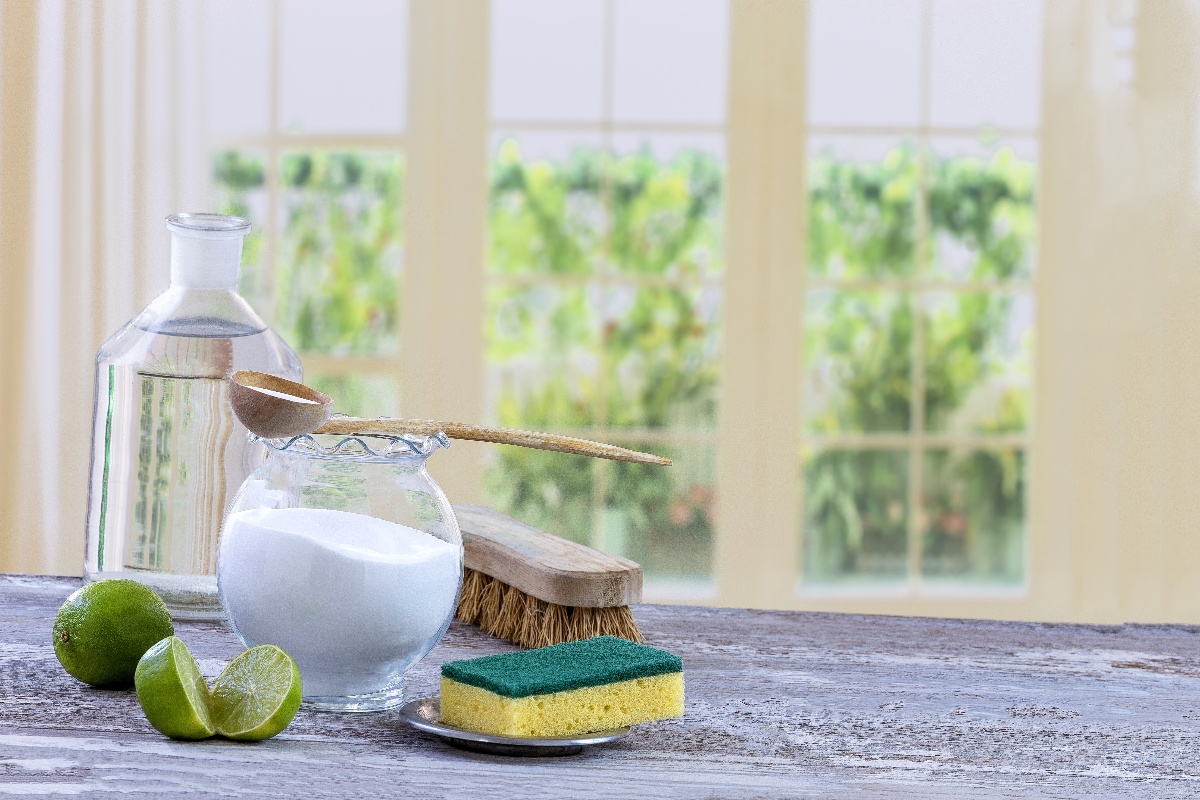Natural Tips for a Clean, Fresh Bathroom
If you eat well, exercise regularly and sweat in your steam shower often, you’re likely proactively mindful of protecting your body from the pollutants and stresses we face every day. One way to further enhance your healthy lifestyle is by incorporating more natural products throughout your home, including the bathroom.
Major corporations are now offering greater transparency about the ingredients they use and why, offering consumers the opportunity to become more informed about the chemicals in their environment. Traditional bathroom cleaners often come with a long list of ingredients unrecognizable to most people who don’t specialize in chemistry. While unlikely to present acute dangers, there a number of reasons to choose a “greener” option, including increased safety for children and pets, a reduced environmental impact and fewer risks of skin and respiratory irritation.
Skeptical that a more natural product can really clean where it counts? Here’s how to get the results you want without the extra chemicals:
Use Organic Scents
Smell is a powerful part of the human experience, so it only makes sense that residential cleaning product companies have invested in creating a variety of scents for their products, from classic lemon to the more abstract “spring waterfall” that many people associate with cleanliness.
Many chemicals used for artificial fragrance can be lumped together under the vague catchall “fragrance” in ingredient lists. The practice is slowly fading, however, as consumer advocates push for greater transparency. For example, the state of California now warns consumers of the potential for phthalates to cause birth defects or cancer. Phthalates are chemically useful because they plasticity and help scents linger in a room. They’re a mobile group though, and one study found the compounds present in more than 75% of human urine, suggesting widespread absorption from the environment.
Instead of artificial fragrances, consider products that use organic, plant-derived essential oils for fragrance. Ingredient labels should list the kind of scented oil used, such as peppermint or lavender extract. If you make your own cleaning solutions, consider adding a few drops of essential oil into the mix.
For everyday scents, consider extending the benefits of your aromatherapy routine into the rest of the bathroom. Mix your favorite essential oil solutions in a vaporizer, warming pot or diffuser to capture the stress-relieving or energizing benefits outside the steam shower.
Simplify Ingredients
If you recall the classic science experiment, oil and water will not mix, which is why water alone isn’t enough to clean your bathroom tile or countertops. To combat dirt or cut greasy mildews, you need a product that can break it down the chemical structure for the water to wash it away.
Store-bought cleaners typically have three active properties for cleaning: an alkaline environment to encourage dissolution, a surfactant to separate oil from water and then water to act as a solvent and wash the mess away. Manufacturers then add a slew of extras including fragrance, skin soothers, dyes and preservatives.
More natural cleaners will often have fewer ingredients, opt for essential oil fragrance and use a gentler surfactant such as sodium lauryl sulfate or potassium hydroxide. If you’re more of a DIYer, consider making your own cleaner with baking soda and water. An alkaline surfactant, baking soda also provides some useful grit for scraping away residue. Essential oil or lemon can be added to the solution for a pleasant smell, too.
Smarter Sanitation
Removing dirt and grime from surfaces will also carry away bacteria and viruses. It will not, however, kill the germs or make the surface uninhabitable for them. For household purposes, maintaining a completely sterile environment is both difficult and unnecessary, as most bacteria aren’t harmful, and some can be good for you. During cold and flu season, however, sanitizing the bathroom may be necessary to avoid infection.
Chlorine bleach, or the water solution of sodium hypochlorite, is a simple, highly effective disinfectant that is considered safe and effective by scientific organizations when used properly. Other common substances approved for disinfecting surfaces include hydrogen peroxide, alcohol and vinegar. Hydrogen peroxide is effective in killing germs but requires more product and surface time than bleach to be effective. Alcohol is another highly-effective sanitizer, but acts as a solvent, posing a risk to finishes in the home, which is why it is typically used for hand sanitizer only. White vinegar, like hydrogen peroxide, can kill germs but takes a considerable amount of surface time to be effective and also risks degrading finishes.
Cleaner Solutions
Making healthier lifestyle choices doesn’t mean compromising hygiene. Thinking outside the mainstream options may provide just as good if not better scents, cleanliness and sanitation without the extra chemicals used for binding, stabilizing and preserving mass-produced solutions. As an added bonus, if you choose to make your own solutions, you can radically decrease the amount of plastic waste you contribute, too. Better for you and better for the planet? It’s a win-win.

 SEARCH
SEARCH
 FIND A DEALER
FIND A DEALER






